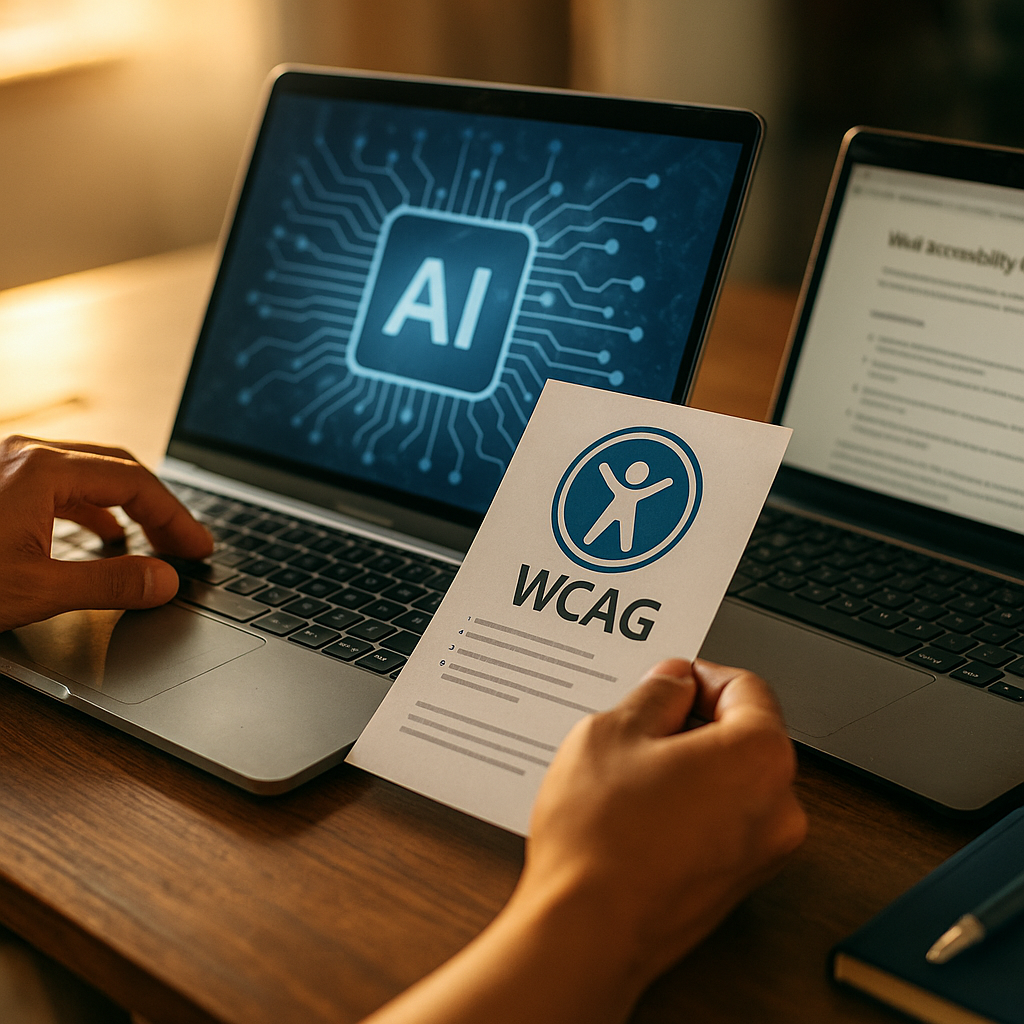Using AI to analyze and improve your website’s accessibility and WCAG compliance is transforming how organizations meet legal standards and serve users with disabilities. Advanced AI tools simplify detection, suggest fixes, and monitor ongoing compliance. Ready to learn how AI can elevate your website’s user experience, risk management, and reputation? Here’s what you need to know in 2025.
Why Accessibility and WCAG Compliance Matter More Than Ever
Accessibility is no longer an afterthought—it’s a legal and business imperative. The World Wide Web Consortium’s Web Content Accessibility Guidelines (WCAG) provide the global standard for digital accessibility. Non-compliance can prompt lawsuits, alienate users, and damage your brand. In 2025, compliance is required in many jurisdictions, and users expect hassle-free digital experiences. AI-driven solutions help close the gap faster, more thoroughly, and at scale.
How AI Accessibility Tools Work for Websites
AI accessibility testing leverages machine learning, computer vision, and natural language processing to identify and fix WCAG violations. These technologies scan web pages, analyzing structure, colors, contrast, alternative text, button labels, and more. Unlike traditional tools that can only find surface-level issues, AI understands design and context. AI tools flag missing image alt-text, inaccessible forms, inconsistent navigation, and identify less obvious problems, like confusing error messages or non-descriptive link text.
Key advantages of AI for accessibility analysis include:
- Speed: Scan hundreds of pages in minutes, not days.
- Depth: Detects issues traditional tools miss, like color-blind accessibility or reading order errors.
- Continuous compliance: Automated monitoring catches regressions after website updates.
AI-Driven WCAG Auditing: Best Tools and Methods in 2025
Several AI-powered auditing tools have earned trust in 2025 for reliable WCAG compliance analysis. Top platforms like Google’s Lighthouse AI, Axe AI, and Tenon use neural networks trained on millions of data points to parse site content and structure. These tools generate prioritized reports with actionable fixes and code snippets tailored to your framework. Some platforms even integrate with CI/CD pipelines to block non-compliant releases automatically.
AI-based methods supplement manual audits by:
- Simulating user interactions, including with screen readers
- Testing for keyboard navigation and focus visibility
- Diagnosing dynamic content and Single Page Application (SPA) accessibility
- Flagging issues unique to mobile or tablet users
This hybrid approach—combining AI and human expertise—achieves over 95% coverage, according to recent user testing studies.
Implementing AI Accessibility Improvements: From Audit to Action
It’s not enough to identify WCAG compliance issues—timely remediation is key. Modern AI systems provide prioritized lists, risk scores, and even automated code fixes for recurring patterns. Leading website builders and CMS platforms now embed AI assistants to suggest real-time improvements as you design and edit content.
Here’s an effective workflow:
- Run a comprehensive AI accessibility scan.
- Prioritize critical, high-impact fixes using risk ratings.
- Use AI-generated remediation code, where possible, to speed up development.
- Collaborate with accessibility experts for user testing and complex cases.
- Monitor ongoing compliance with scheduled AI checks after each content or layout update.
Adopting this workflow ensures proactive compliance and reduces the burden on developers and content managers.
Understanding the Limitations of AI in Accessibility Analysis
While AI tools are powerful, they can’t replace all aspects of human judgment. Some accessibility issues—such as the appropriateness of descriptive alt text or meaningful content hierarchy—require human review. AI occasionally generates false positives or misses cultural nuances critical to inclusivity.
Best practice in 2025 is to blend AI audits with expert manual testing and include real users with disabilities in evaluation phases. This ensures your website exceeds minimum accessibility standards and provides a truly usable experience for everyone.
Future Trends: AI and the Next Generation of Accessible Web Experiences
AI innovation shows no sign of slowing. In 2025, emerging trends include AI-driven personalization for assistive technologies, real-time accessibility overlays for dynamic content, and context-aware chatbots to guide users through complex forms or transactions. Proactive accessibility monitoring from AI systems will soon be a built-in standard for all major web platforms, ensuring every user gets an equitable digital experience.
Organizations that invest early in AI-powered accessibility solutions are already reporting increased user satisfaction, reduced legal exposure, and stronger brand reputation.
FAQs: Using AI to Analyze and Improve Website Accessibility
-
What is WCAG compliance and why is it important?
WCAG stands for Web Content Accessibility Guidelines, the global benchmark for web accessibility. Compliance ensures your website is usable by people with disabilities and helps you avoid legal risks.
-
How does AI improve website accessibility testing?
AI quickly scans your site, detects deep and hidden issues, prioritizes fixes, and can even generate remediation code, saving time and raising your compliance rates.
-
Can AI fully replace manual accessibility audits?
No. AI excels at finding technical issues but human testers are vital for evaluating usability, context, and complex content needs.
-
Should small businesses use AI for accessibility?
Yes. Affordable AI tools reduce manual workload and make it easier for small teams to achieve and maintain WCAG compliance continuously.
-
How often should I scan my website for accessibility issues?
You should scan after every significant content or code update and schedule full audits at least quarterly for ongoing compliance.
AI-powered tools now make it faster and easier to achieve and maintain your website’s accessibility and WCAG compliance. By combining AI analysis with human-centered design and regular monitoring, your organization can protect itself, boost user satisfaction, and lead in digital inclusivity in 2025.
